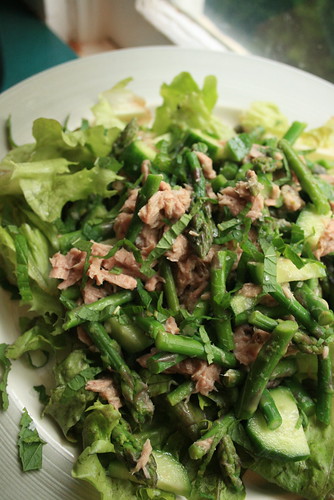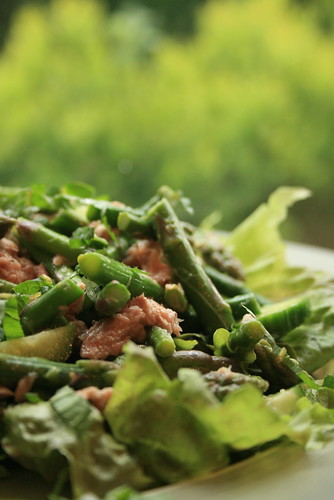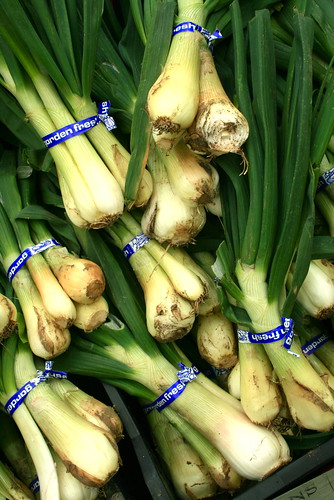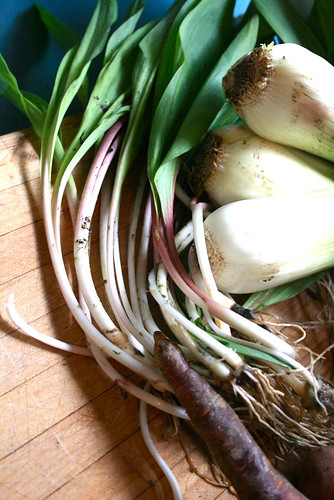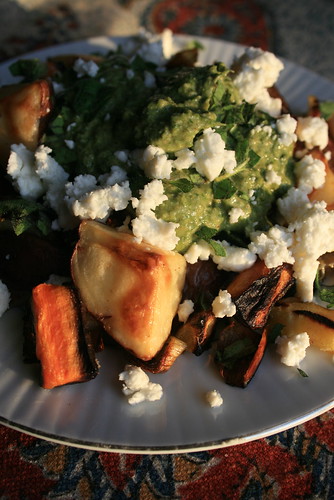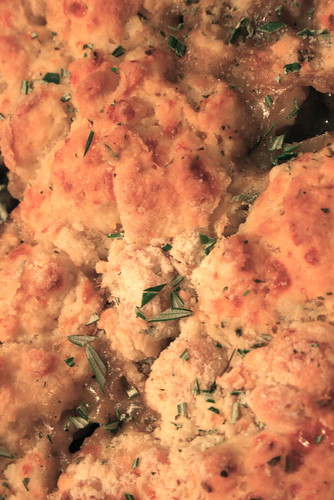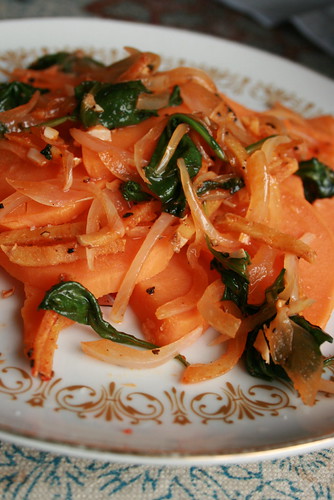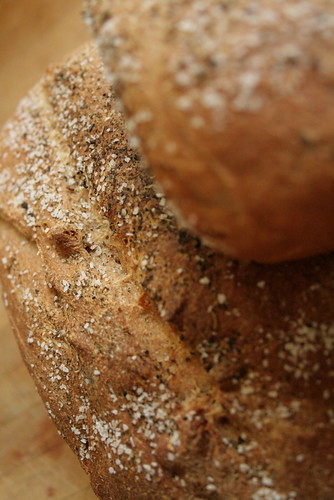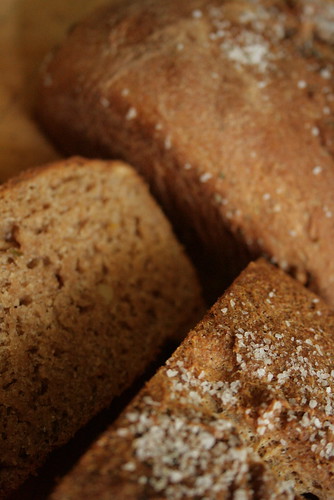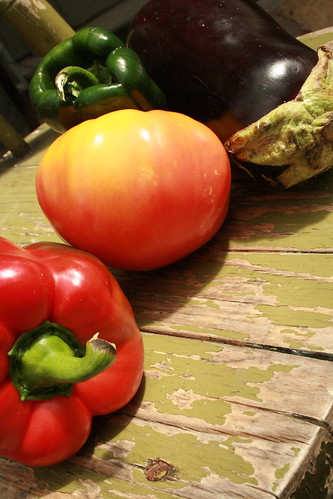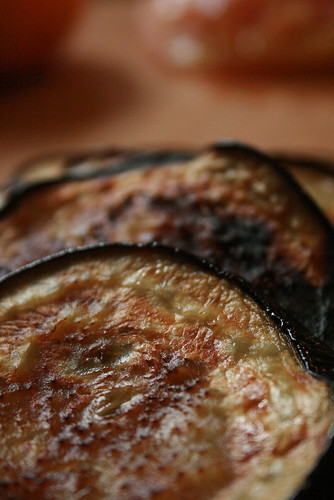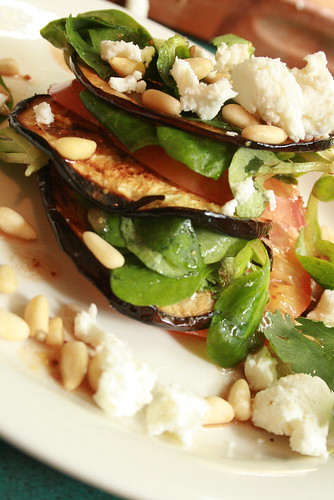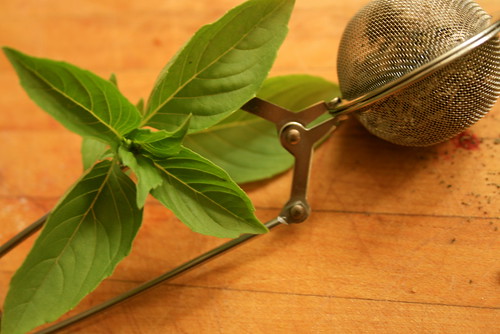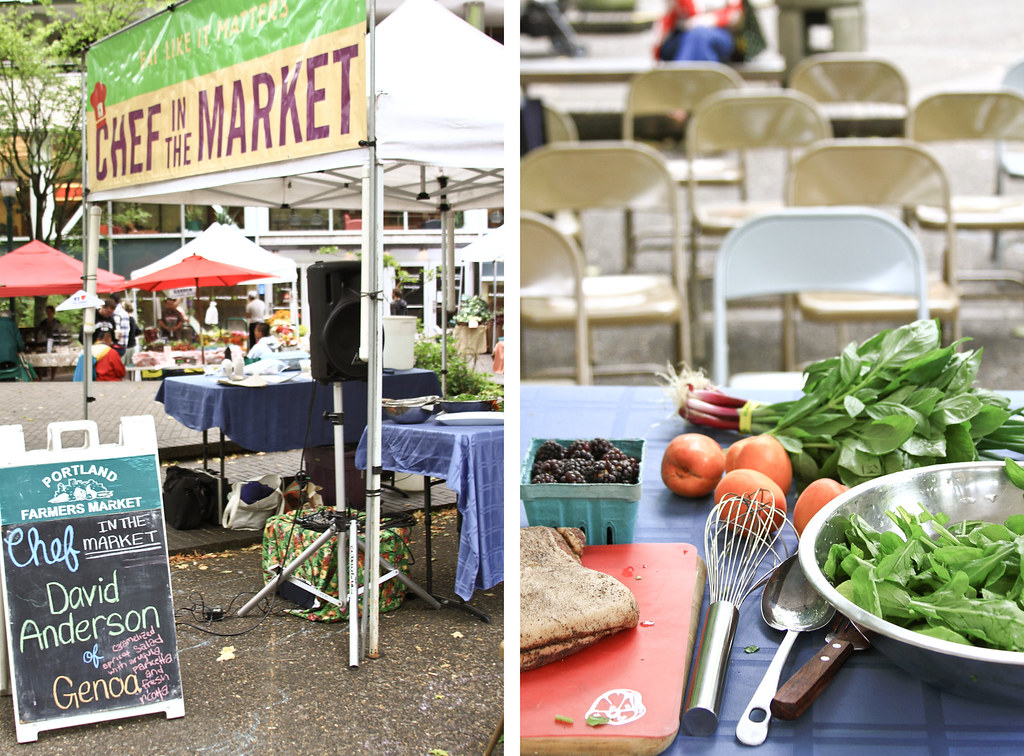
Yesterday I had the pleasure of hosting a demonstration at the PSU Portland Farmers' Market with Chef David Anderson of the newly-reopened Genoa and its sister restaurant Accanto, and we had a really great time. This weekend's weather has been a bit confusing, starting off cool and cloudy and slowly burning off to a gorgeous sunny day, so our audience started a bit on the small side. Once people around the market started smelling frying pancetta and caramelizing apricots, however, we had quite the crowd. David was great, sharing stories from Genoa's past and present and explaining how the menu has been "traveling through Italy" as the seasons change in Portland.
Every month, the restaurant features a five-course prix fixe menu highlighting the specialties of a single region in Italy, and David selects the region based on the pairing of authentic ingredients with what's available in the markets in Portland. This month the menu features Chef David's interpretation of dishes from Abruzzo and Molise, a region nestled at the border of Northern and Southern Italy in the highland foothills of the Apennine mountains. The mouthwatering offerings include:
- Scamorze allo spiedo: Creamy scamorza cheese (a stretched cow's milk cheese similar to mozzarella) skewered on rosemary stems, pan seared and served with marinated baby artichokes and pickled asparagus.
- Farfalline con pisselli e fave: small hand-made pasta butterflies tossed in a savory San Marzano tomato sauce with Viridian Farms peas, fava beans, lemon zest and fresh sheeps milk ricotta.
- Pasta alla chitarra con ragu d’agnello: fresh egg and semolina pasta cut on a traditional chitarra or “guitar” tossed with a ragu of Cattail Creek lamb and sweet peppers.
- Scapece di salmone alla vastese: salad of wild Oregon Sockeye salmon marinated in champagne vinegar, white verjus (a very acidic juice made from pressing unripe grapes), saffron and aromatic vegetables served over baby spinach, sweet basil and Yukon gold potatoes.
- Dentice e calamari in purgatorio: Line caught pacific rockfish and calamari sautéed in a spicy sauce of onions, white wine, tomatoes and dried chiles.
- Coniglio alla grigliata misti: Mixed grill of rabbit; tender loin skewered with house made rabbit sausage and kidney served with airy potato croquettes and caramelized baby fennel.
- Lombatine pepate e fiamma: Grilled Pepper and herb crusted strip loin steak flamed with strega liquor and served with a saffron risotto stuffed pepper and a raw zucchini and mint salad.
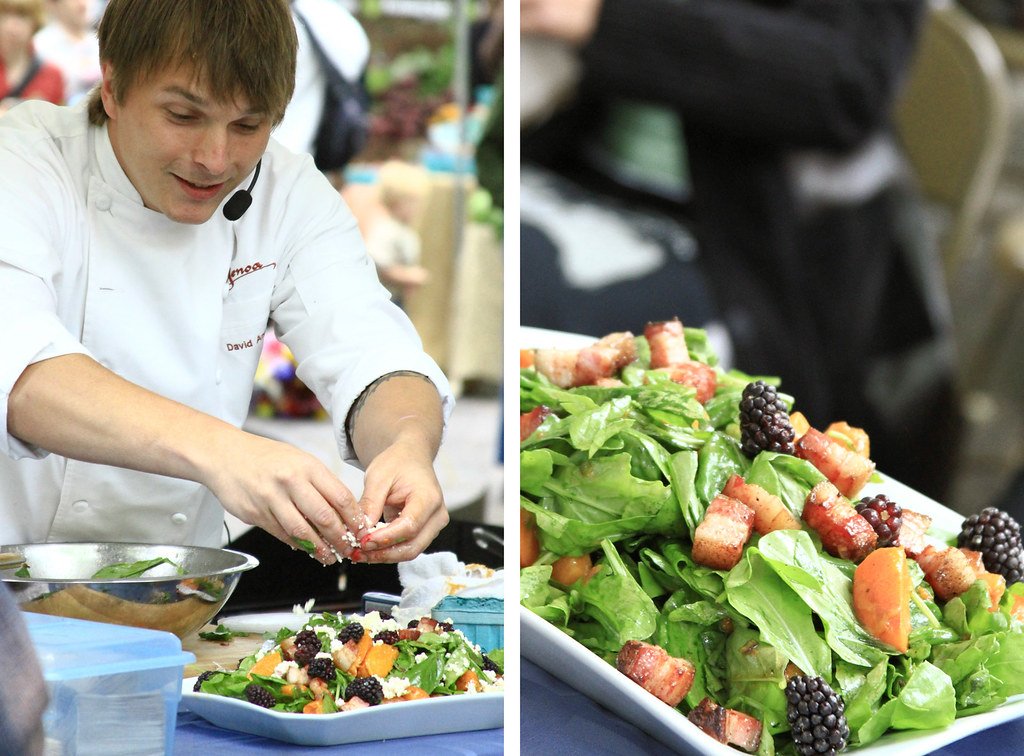
Start your culinary tour of Italy via Oregon's farm-fresh bounty with what may be the perfect summer salad: Crispy pancetta cubes, sweet and tart apricots with a perfect sear in butter and honey, peppery arugula and fresh basil leaves, and a sprinkling of the Oregon favorite, Marionberries, and fresh, creamy ricotta cheese. Chef David provides a step-by-step guide for making this delicious dish, which would make a great summer meal on its own, or serve as the starter for your next five-course supper party extravaganza. Eat well, or perhaps more appropriately, buon appetito!
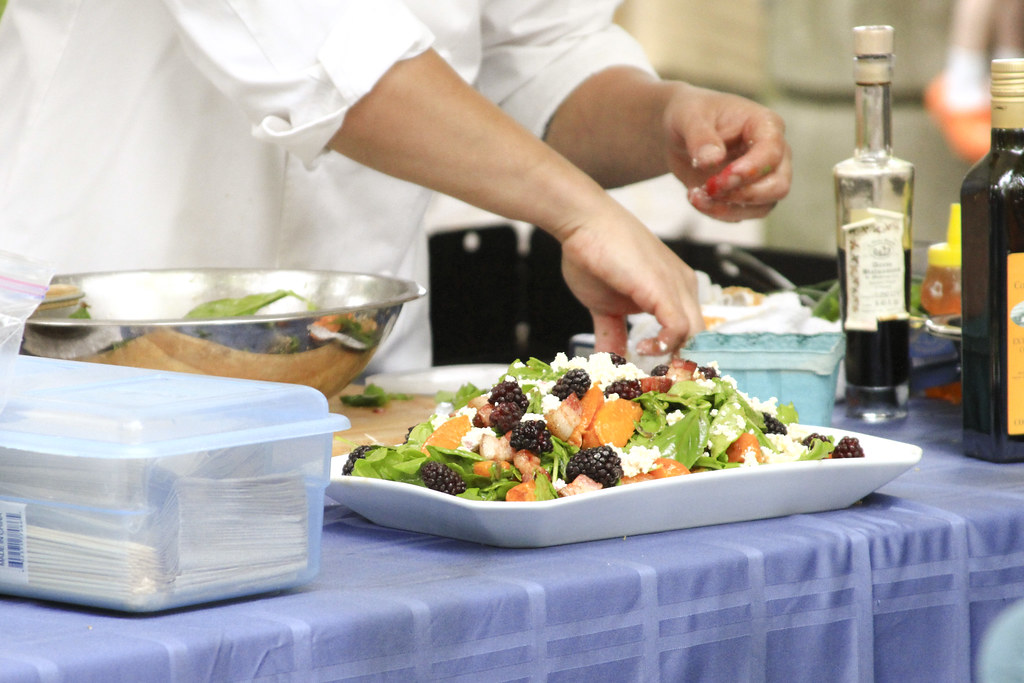
Caramelized Apricot Salad with Arugula, Basil, Pancetta, Marionberries, and Fresh Ricotta
Recipe courtesy of Chef David Anderson of Genoa and Accanto, 2010
Serves six as a starter or four as a light meal
For the vinaigrette:
1 pound pancetta, cut into lardoons (bite sized chunks)
2 tablespoons minced shallots
1/4 cup Balsamic vinegar, preferably 12 year
1/2 cup extra virgin olive oil
Salt and Pepper to Taste
1. Place the pancetta and the olive oil in a small sauté pan and slowly bring up the heat to render out the fat. Leave over a low flame until the pancetta starts to color.
2. Drain the pancetta reserving the fat into a separate bowl. Keep the pancetta lardoons warm or at room temperature.
3. Put the pan back over the heat and add the shallots. Sweat for a few minutes until soft then deglaze with the balsamic vinegar.
4. Whisk in the reserved fat and taste for seasoning.
For the apricots:
6 apricots, ripe but firm, cut in half vertically and pitted
4 tablespoons butter
2 tablespoons honey
Salt and pepper to taste
1. Heat butter slowly in a wide sauté pan. As soon as butter foam subsides add the aprictos cut side down.
2. Raise the heat and lightly caramelize the apricots. Add the honey and toss well. Remove from the heat and cool slightly.
3. Cut into wedges and taste for seasoning.
For the salad:
3 bunches of fresh arugula, washed and stemmed
1 bunch of basil, stemmed, leaves roughly torn
1/4 pound fresh ricotta, crumbled
Reserved pancetta cubes
Marionberries
Apricots
Vinaigrette
Salt and pepper to taste
In a large mixing bowl toss the apricots, arugula, and basil with enough of the vinaigrette to coat. Taste for seasoning and garnish with pancetta, berries, and ricotta.

